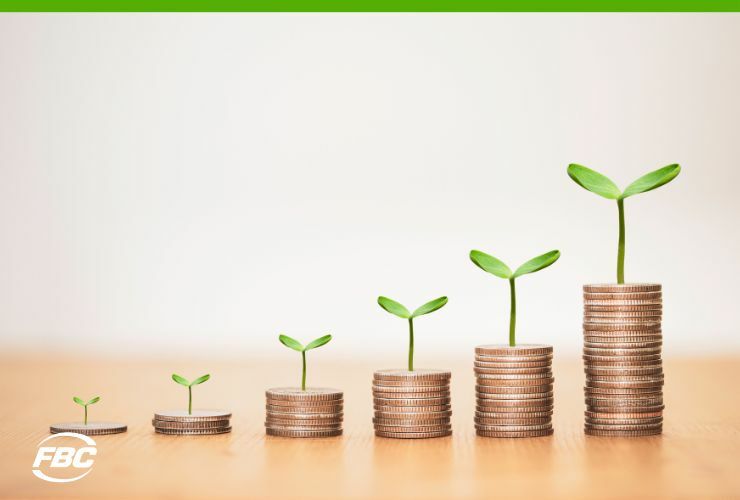Contents
Last updated: Dec. 22, 2023
When you’re a small business owner, long-term financial security and retirement planning are critical. Proactively investing today in your future cash flow, taxes, and healthcare expenses can help set you up for a financially stable retirement.
One valuable tool Canadian business owners can use to help them meet their retirement goals is a registered retirement savings plan (RRSP). An RRSP is a tax-advantaged savings account that allows you to contribute pretax dollars to the account and grow your retirement investment tax-free until you withdraw it.
There are a lot of benefits to adding an RRSP to your retirement income strategy, but, as with any financial transaction, there are factors you need to be aware of—and we recommend that you consult with your tax specialist before investing.
Let’s take a closer look at the registered retirement savings plan—how it works, who should invest, the best ways to invest an RRSP, and what you need to know to get the most out of your RRSP.
How does a registered retirement savings plan work?
RRSPs are overseen by the Canada Revenue Agency (CRA), which governs the plan rules defining how much you can contribute each year, when you are required to withdraw funds, and what investment options are allowed.
What are the contribution limits?
Annual contributions to your RRSP are based on deduction limits, or the amount you can put into your RRSP and deduct from your tax bill. This limit is calculated as a percentage of your earned income reported on the previous year’s tax return; however, any unused contribution allowance can be carried forward to future years.
For 2024, the deduction limit is 18 percent of your 2023 reported income, with a maximum of $31,560 (up from $30,780 in 2023).
It’s important to note that as a business owner, you only qualify to invest in an RRSP if you receive a salary as an employee of your business rather than dividends as a shareholder.
What are the tax benefits?
RRSPs provide two main tax advantages. The first is that your contributions are tax-deductible up to the deduction limit (see above). Taking this deduction reduces your taxable income, lowering your tax bill and potentially making you eligible for a tax refund.
Deduction limits will almost always be lower than contribution limits because few people max out their contributions, so the limit increases by the amount left in the allowance each year.
The second tax advantage of an RRSP is that your investments grow tax-free until withdrawal. This means that you don’t pay taxes on it until retirement (or sooner if you take an early withdrawal), which can add to your savings considerably because most Canadians fall into a lower tax bracket when they retire.
When can I withdraw money from my RRSP?
Provided you’re not invested in a locked-in RRSP, you can withdraw money from your plan at any time. However, if you make a withdrawal before age 71, you may be required to pay withholding tax and claim the withdrawal as income when you file your taxes.
Tax-deferred early withdrawals from your RRSP are permitted if you will use the money to purchase your first home through the Home Buyer’s Plan or to pay certain education expenses through the Lifelong Learning Plan.
All RRSP investors are required to withdraw the funds from the RRSP by Dec. 31 of the year you turn 71. You must then decide whether to keep the cash-out, transfer the funds to a registered retirement income fund (RRIF), or purchase an annuity.
If you opt not to reinvest the funds, you will be responsible for taxes at this time. However, if you transfer your RRSP directly to an RRIF or an annuity, you won’t pay taxes until you start making withdrawals from these accounts.
What are the best ways to invest an RRSP?
Contributions to an RRSP are limited to specific qualified investments as defined by the CRA. Examples of qualified investments include:
- Mutual funds
- Exchange-traded funds
- Equities (stocks)
- Bonds
- Savings accounts
- Mortgage loans
- Income trusts
- Guaranteed investment certificates
- Foreign currency
The earnings and capital gains from these qualified investments are tax-deferred until withdrawal.
Who can invest in an RRSP?
Canadian small business owners who receive an income from their business (not exclusively dividends) and file a tax return are eligible to open an RRSP.
If you are married or have a common-law partner, it might make sense to open a spousal RRSP in addition to your individual account.
A spousal RRSP is a good option if one partner makes significantly more than the other. This type of RRSP allows partners to split their RRSP income in retirement and pay lower marginal tax rates.
What are the best ways to get the most out of your RRSP investments?
1. Play catch-up.
If you haven’t maxed out your deduction limits, make a catch-up contribution. This is especially beneficial if your catch-up contribution is now deductible at a higher rate of taxation than in previous years.
2. Borrow for the short term (if it helps in the long term).
It sounds a bit counterintuitive, but taking out a short-term loan to make an RRSP contribution can work out in your favor. Loan contributions aren’t tax-deductible, but you will benefit from compounding interest and tax deferment as long as you can afford the payment and you pay back the loan before interest negates the tax advantages.
3. Be an overachiever.
Technically, there is a cap on your annual RRSP contributions, but account holders can overcontribute up to $2,000 each year penalty-free. Contributing more than $2,000 over the limit will result in a 1 percent per month penalty, which cancels any benefit.
4. Invest early; maximize the benefits.
Don’t wait until the end of the year to make your RRSP contribution(s). The earlier in the year you start putting money into your RRSP, the greater the growth potential of your tax-free, compounding interest investment.
5. Invest later; maximize the benefits.
Sometimes, not making a contribution is your smartest investment choice. If you are currently in a low tax bracket but expect that to change in the near future, consider deferring your contribution for a higher tax bracket year to maximize the tax advantages.
Add an RRSP to your retirement income planning strategy.
It’s easy to get lost in the day-to-day of running your business and forget to plan ahead for retirement. A registered retirement savings plan is a great way for small business owners to invest in tomorrow while benefiting from tax advantages today.
[Free Download] The Ultimate Guide to Tax Planning and Preparation
For Canadian farmers, contractors, and small business owners, tax planning and tax preparation aren’t once-a-year events. They require an ongoing strategy focused on meeting today’s goals and building wealth for the future.
To help you get started, we created the Ultimate Guide to Tax Planning and Preparation for the Canadian Farmer, Contractor, and Small Business Owner, a comprehensive resource that provides deeper insight into tax planning and preparation.
Speak with a Canadian tax specialist.
FBC was founded on the belief that Canadians should receive every benefit of filing their taxes. More than 70 years later, we continue to support farmers, truckers, tradespeople, and small business owners to minimize their taxes, simplify their books, and pay their employees.
Take 15 minutes to connect with us. Let’s see if we’re a good fit for you and your business. Book online or call us at 1-800-265-1002
Book My Free Consultation Now



